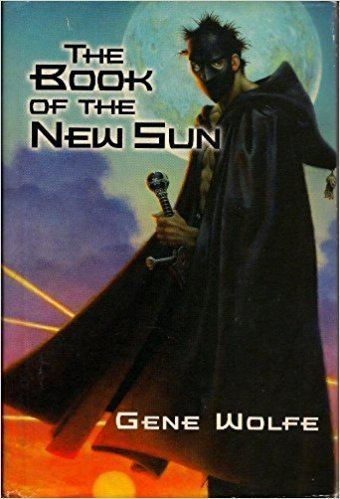Language English Country United States of America | Pages 950 Genre Science Fiction | |
 | ||
Series Solar CycleBook of the New Sun sub-series Publication date 1980-1983 (four vols); 1994 (two) Books The Shadow of the Torturer, Shadow & claw, The Claw of the Conciliator, Sword & Citadel: The Seco, The Sword of the Lictor | ||
Book review the book of the new sun
The Book of the New Sun (1980 – 1983) is a series of four science fantasy novels or one four-volume novel written by American author Gene Wolfe. Alternatively, it is a series comprising the original tetralogy, a 1983 collection of essays, and a 1987 sequel. Either way, it inaugurated the so-called "Solar Cycle" that Wolfe continued after 1987 by setting other multi-volume works in the same universe.
Contents
- Book review the book of the new sun
- Alastair reynolds discusses the book of the new sun
- Place within the genre
- New Sun series
- Language
- Solar Cycle
- References
Gene Wolfe had originally intended the story to be a 40,000-word novella called "The Feast of Saint Catherine", meant to be published in one of the Orbit anthologies, but during the writing it continued to grow in size. Despite being published with a year between each book, all four books were written and completed during his free time without anyone's knowledge when he was still an editor of Plant Engineering, allowing him to write at his own pace and take his time.
The tetralogy chronicles the journey of Severian, a disgraced journeyman torturer who is exiled and forced to travel to Thrax and beyond. It is a first-person narrative, apparently translated by Wolfe into contemporary English, set in the distant future when the Sun has dimmed and Earth is cooler (a "Dying Earth" story).
In 1998, Locus magazine ranked the tetralogy number three among 36 all-time best fantasy novels before 1990, based on a poll of subscribers.
Alastair reynolds discusses the book of the new sun
Place within the genre
The Book of the New Sun belongs to the Dying Earth subgenre of speculative fiction, named after the Dying Earth series by Jack Vance (1950 to 1984). Substantially that is fantasy or science fiction set in a distant future when Earth's sun is dying (cooling notably). The setting commonly includes mysterious and obscure powers and events.
New Sun series
Each of the four original volumes won at least one major fantasy or science fiction award as the year's "Best Novel" (see table). The tetralogy was not considered as a whole for any of the annual literary awards compiled by the Internet Speculative Fiction Database (ISFDB).
The tetralogy was published in the U.K. by Sidgwick & Jackson (1981 to 1983). For the first volume, that was twelve months after its U.S. release, for the second volume seven months, for the latter two volumes only two months later. The Urth of the New Sun "coda" novel appeared three months earlier in the U.K. (Gollancz, August 1987) and the component volumes of subsequent series in the Solar Cycle, Long Sun and Short Sun, were published essentially at once in the U.S. and U.K.
Since the original four-volume novel, Wolfe has also written three short fictions and two book series that are set in Severian's universe (almost all subsequent to Urth). The Internet Speculative Fiction Database catalogues it all as the "Solar Cycle" (below) comprising the short works and three sub-series.
Language
The Book of the New Sun has been widely analyzed for its deeper meanings; some of these analyses have been published, such as Michael Andre-Driussi's Lexicon Urthus (ISBN 0-9642795-9-2) and Robert Borski's Solar Labyrinth. Wolfe makes extensive use of allegory within the series, as Severian is identified as a Christ/Apollo figure: he is destined to revitalize the Sun and save the Earth while at the same time destroying it. Adding further to the books' many riddles is Wolfe's use of archaic, obscure (but never invented) words to describe the world of the far future. In an Appendix at the end of The Shadow of the Torturer, Wolfe explains that this is one of the difficulties in translating Severian's writing ("in a tongue that has not yet achieved existence") into English. An example can be found in Severian's fuligin cloak ("the color that is darker than black"), probably derived from fuliginous, an obscure and archaic word meaning sooty. Other examples are optimates, named for a political faction in Republican Rome, aquastor, a spiritual being that appears in the works of Paracelsus, and fiacre, a small carriage (which is, in fact, a French word with that meaning).
Solar Cycle
Since the original four-volume novel, Wolfe has also written three short fictions and two book series that are set in Severian's universe (almost all subsequent to Urth). The Internet Speculative Fiction Database catalogues it all as the "Solar Cycle" comprising the short works and three sub-series.
The two later subseries are The Book of the Long Sun (1993–1996, four volumes) and The Book of the Short Sun (1999–2001, three volumes). Long Sun is set on a generation ship and Short Sun features the inhabitants of that generation ship after their long journey. Two of the Long Sun books were nominated for Nebula Awards.
